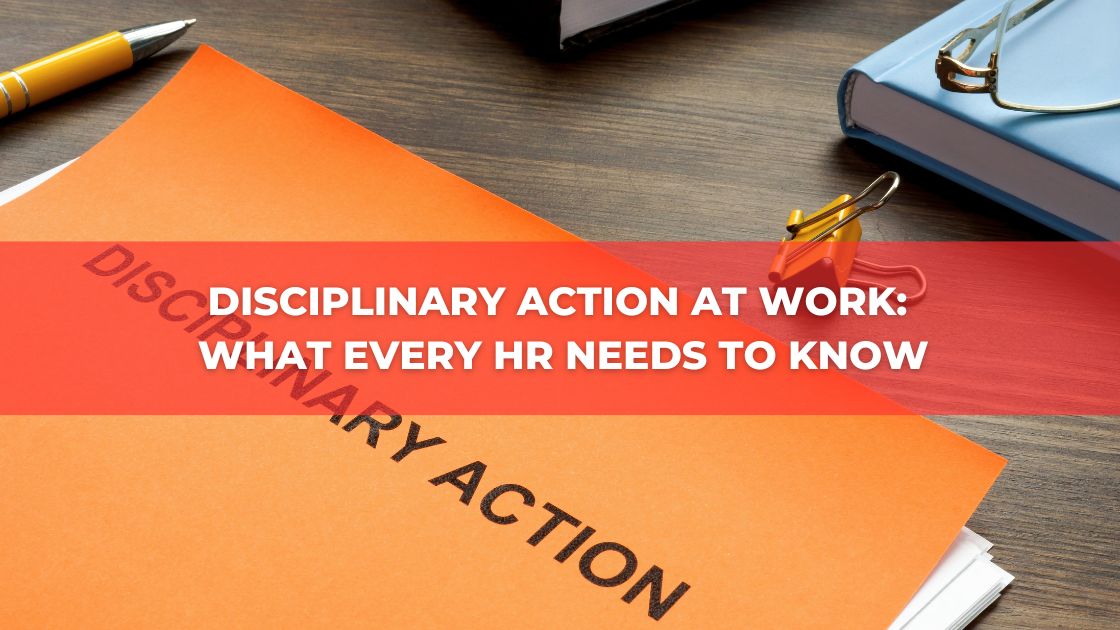Disciplinary action is a vital component of maintaining a harmonious and productive workplace. While it may be an uncomfortable process, it is essential for creating an environment where employees thrive. Disciplinary action not only justifies involuntary terminations but also contributes to the creation of a safe, effective work environment. In this comprehensive guide, we will explore what disciplinary action entails, its significance in the realm of human resources, and how to handle it efficiently. We will also address some frequently asked questions to provide you with a well-rounded understanding.
What is Disciplinary Action?
Disciplinary action is a corrective measure that organizations take in response to employee misconduct, which may encompass behavioral issues or performance deficiencies. When employers hire individuals, they have specific expectations regarding job performance, adherence to policies, procedures, and legal compliance. Disciplinary actions are taken to rectify employee behavior while documenting the issues for future reference. It’s important to note that the primary aim of disciplinary action is not to punish employees but to correct their behavior.
The role of Human Resources in managing workplace disciplinary action varies depending on the organization and available resources. In some companies, HR only gets involved in more severe disciplinary actions, while in others, they may play a role in all disciplinary meetings. Regardless of the level of involvement, HR is responsible for defining disciplinary action policies and formalizing procedures for addressing actions that contravene the company’s rules. These policies are typically outlined in the organization’s employee handbook.
Types of Misconduct in the Workplace
Disciplinary actions are typically responses to various forms of employee misconduct. Here are some common types of misconduct:
- Poor Performance: Employees are expected to perform their job duties up to the set standards. Consistently failing to meet these expectations can lead to disciplinary action.
- Unprofessional Conduct: Maintaining professionalism is essential at the workplace. Unprofessional behavior, such as harassment, discrimination, or threats, is considered misconduct.
- Violation of Company Policies: Employees are required to adhere to all company policies and procedures, including attendance, dress code, and other guidelines outlined in the employee handbook.
Examples of Employee Misconduct
Let’s explore specific examples of employee misconduct that may result in disciplinary action:
- Insubordination: Refusing to follow lawful and reasonable directives from supervisors.
- Theft or Fraud: Engaging in activities like stealing company property or fraudulent actions.
- Harassment: Creating a hostile work environment through abusive or threatening behavior towards coworkers or customers.
Types of Disciplinary Procedures
Employers can employ various types of disciplinary procedures, depending on the severity of the misconduct. These procedures include:
- Verbal Warning: A verbal warning is an informal conversation between a manager and the employee. It serves as a reminder of the company’s expectations and is usually used for minor offenses.
- Written Warning: A written warning is a more formal step in the disciplinary process, used for more serious offenses. It creates a documented record of the incident.
- Performance Improvement Plan (PIP): A PIP is the most common type of disciplinary procedure. It outlines specific goals and expectations for employees to meet within a specified timeframe, providing an opportunity for improvement.
- Suspension: Suspension involves temporarily removing an employee from work, typically used when an employee’s behavior is too disruptive to allow them to remain on the job.
- Termination: Termination is the most severe form of disciplinary action and is usually employed for serious misconduct or consistent failure to meet performance standards.
Best Practices in Disciplinary Action
Conducting disciplinary action can be challenging, but following best practices can make the process fair and effective. Some of these practices include:
- Following Established Procedures: Employers should have clear, written disciplinary procedures in place and consistently adhere to them.
- Documenting Incidents: Employers should maintain records of employee misconduct or performance issues to have a clear and objective record of the situation.
- Involving a Support Person: Employees have the right to have a support person present during disciplinary meetings. This individual can be a union representative or a friend or family member.
- Progressive Discipline: Employers can employ progressive discipline, which begins with a verbal warning and escalates to more severe forms of discipline as needed, offering employees an opportunity to improve.
- Avoiding Unfair Dismissal: Employers should be cautious to avoid unfair dismissal, which can result from taking disciplinary action without a valid reason or failing to follow established procedures.
- Offering a Performance Improvement Plan (PIP): A PIP is an effective tool for addressing performance issues. It should specify clear goals, expectations, and a timeline for improvement.
Frequently Asked Questions
1. What is the purpose of disciplinary action?
Disciplinary action serves as a corrective measure in response to employee misconduct, be it related to performance deficiencies or behavioral issues. The primary goal is to rectify employee behavior rather than to punish them, while also documenting the issues for future reference.
2. What types of misconduct in the workplace can lead to disciplinary action?
Common types of workplace misconduct include poor performance, unprofessional conduct (e.g., harassment or discrimination), and violations of company policies (e.g., attendance or dress code infractions).
3. Can you provide examples of employee misconduct?
Certainly, examples of employee misconduct may include insubordination (refusal to follow reasonable directives), theft or fraud (stealing company property or fraudulent activities), and harassment (creating a hostile work environment through abusive behavior).
4. What are the various types of disciplinary procedures?
Employers can employ several disciplinary procedures, including verbal warnings (informal reminders of expectations), written warnings (formal documentation of incidents), performance improvement plans (formal procedures with specific improvement goals), suspension (temporary removal from work), and termination (the most severe action).
5. What are the best practices for conducting disciplinary action?
Best practices for conducting disciplinary action include following established procedures, documenting incidents, involving a support person for employees, using progressive discipline, avoiding unfair dismissal, and offering performance improvement plans with clear goals and expectations.
6. How does HR’s role in disciplinary action vary across organizations?
The extent of HR’s involvement in disciplinary action varies between organizations. In some, HR is only involved in more serious disciplinary actions, while in others, they may participate in all disciplinary meetings. However, regardless of the level of involvement, HR is responsible for outlining disciplinary action policies and formalizing procedures based on the company’s rules, often outlined in the employee handbook.
In conclusion, disciplinary action is a crucial tool for fostering a safe and productive workplace. By following established procedures and best practices, employers can ensure that disciplinary action is used to improve employee behavior and performance, rather than merely as a punitive measure.

Darren Trumbler is a versatile content writer specializing in B2B technology, marketing strategies, and wellness. With a knack for breaking down complex topics into engaging, easy-to-understand narratives, Darren helps businesses communicate effectively with their audiences.
Over the years, Darren has crafted high-impact content for diverse industries, from tech startups to established enterprises, focusing on thought leadership articles, blog posts, and marketing collateral that drive results. Beyond his professional expertise, he is passionate about wellness and enjoys writing about strategies for achieving balance in work and life.
When he’s not creating compelling content, Darren can be found exploring the latest tech innovations, reading up on marketing trends, or advocating for a healthier lifestyle.
